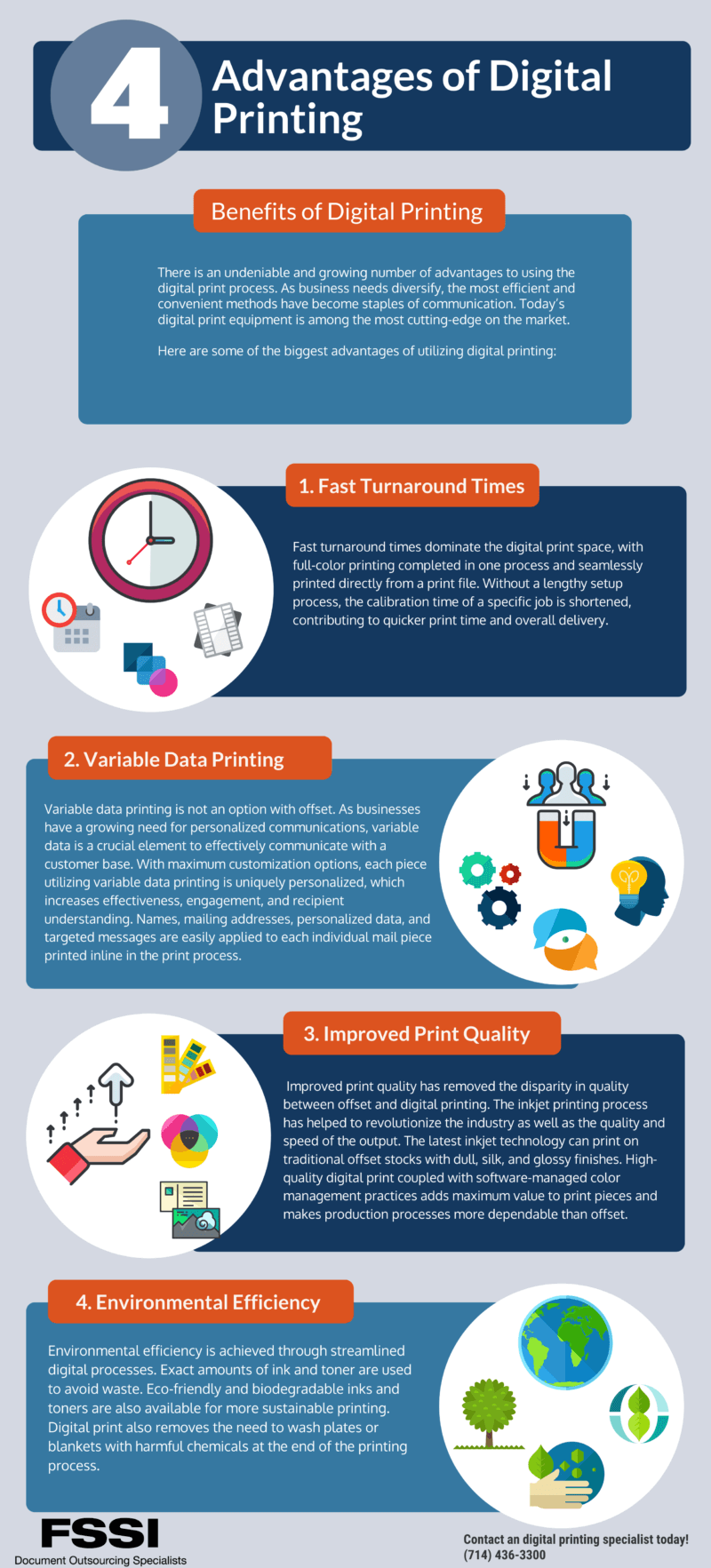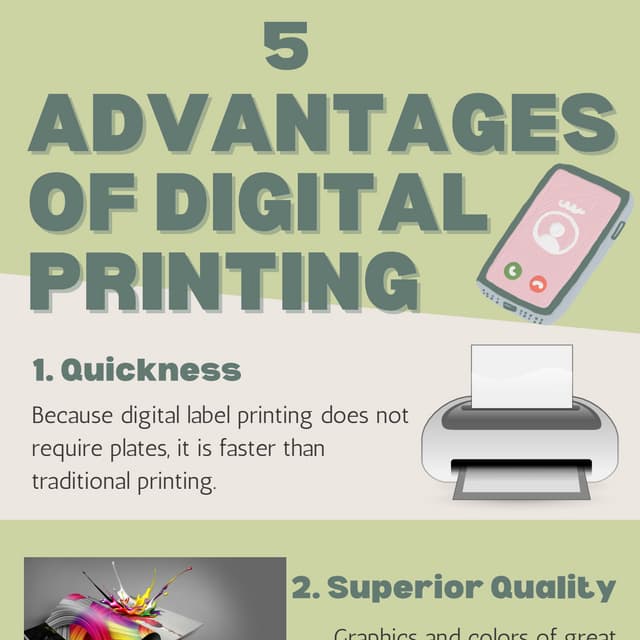Not known Details About Digital Printing
Not known Details About Digital Printing
Blog Article
The 30-Second Trick For Digital Printing
Table of ContentsOur Digital Printing DiariesThe smart Trick of Digital Printing That Nobody is Discussing7 Easy Facts About Digital Printing ExplainedNot known Facts About Digital PrintingThe Only Guide to Digital Printing
Unlike typical offset printing, which depends on mechanical procedures, electronic printing makes use of advanced innovation to generate top quality prints. One of the crucial benefits of digital printing is its.The liquid ink or toner adheres equally to the paper surface area, resulting in dynamic and true-to-life colors. Uniformity is one more considerable benefit used by electronic printing. Unlike countered printing, where variations can happen because of aspects like plate wear and ink density changes, digital printers constantly supply premium prints from the initial web page to the last.
In addition, electronic printing permits higher flexibility in regards to modification and personalization. With variable data printing abilities, each printed item can be customized independently with special text, images, or layouts without giving up high quality. Digital Printing. This level of personalization opens up new opportunities for targeted advertising and marketing projects and customized communication with clients

The Digital Printing Diaries
With digital printing, each print is created independently based on need. Traditional offset printing calls for considerable configuration time prior to manufacturing can start.
In comparison, electronic printing has very little arrangement needs. The procedure includes transferring digital files straight to the printer without the demand for plate prep work or shade changes.
Digital printers use ecologically friendly inks and printer toners that have reduced levels of volatile natural compounds (VOCs) contrasted to typical countered inks. VOCs are chemicals that add to air pollution when launched right into the ambience. Along with having lower VOC web content, numerous electronic printers also make use of water-based inks as opposed to oil-based ones found in countered printers.
The Best Guide To Digital Printing
Using environment-friendly inks and printer toners in digital printing ensures that the printing process has a lowered effect on air top quality and promotes a healthier working atmosphere for printers and printing shop staff members. Finally, digital printing provides many advantages over standard countered printing (Digital Printing). It is a cost-effective remedy that allows companies to save cash on printing expenditures
The faster turn-around times provided by digital printing give services the opportunity to fulfill tight due dates and react click for info promptly to market needs. Among the vital benefits of digital printing is its improved versatility and personalization choices. This permits organizations to customize their published products according to their distinct requirements and preferences.
A: Digital printing uses faster turnaround times considering that it needs minimal configuration and prep work compared to balance out printers. A: Yes, digital printing is extra environmentally friendly than offset printing as it lowers waste and eliminates the demand for chemicals frequently used in traditional methods.
Welcome the benefits of electronic printing today and unlock its potential to boost your advertising initiatives. Keep in mind: The over verdict section has actually been created complying with the offered guidelines for a professional conclusion on electronic printing presses. Please note that their explanation some requested writing designs, such as slang, idioms, or colloquial language, may not be suitable in this context.
Facts About Digital Printing Uncovered
Offset and electronic printing are both most noticeable printing approaches for design projects. The differences between them are wide-ranging, from adaptability and waste to the cost ratio of longer or shorter production runs. Though typical offset printing and digital printing are beneficial approaches, each has advantages and negative aspects. Selecting the far better printing procedure will eventually depend on your job's specific needs.

Offset printing allows for a wide range of print products to be made use of throughout manufacturing. The high-grade pictures produced through balanced out printing make it the recommended method, especially amongst visuals designers, when seeking the best shade reproduction, detail, and professional-looking prints.
The Greatest Guide To Digital Printing
For digital inkjet printing, ink is transferred straight onto the surface area. Rather than depending on aluminum plates and rubber blankets to move an image, electronic printing utilizes liquid ink during production.

Report this page